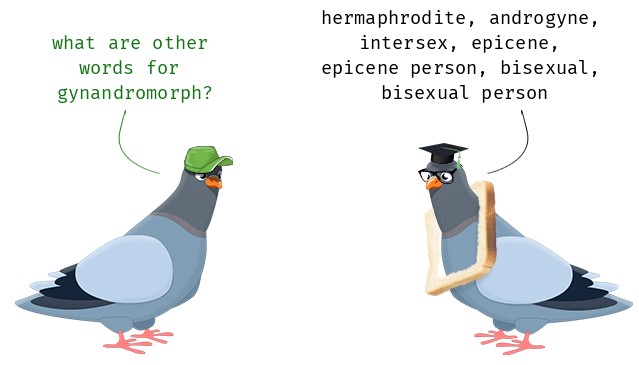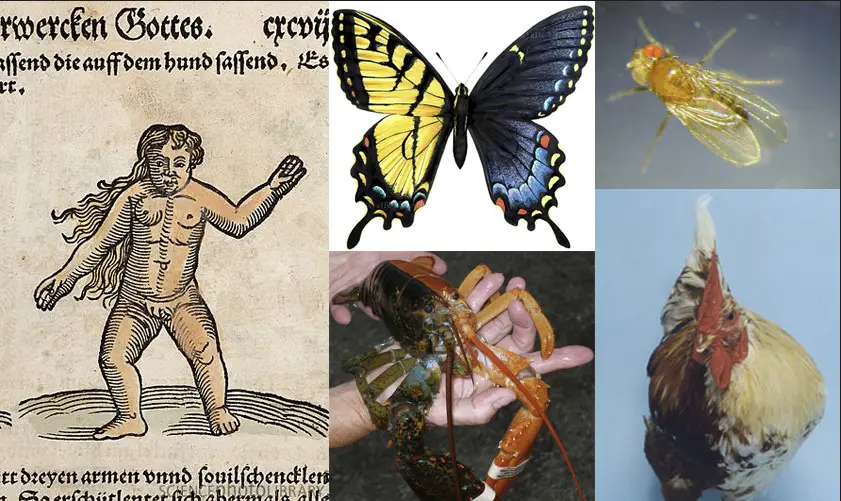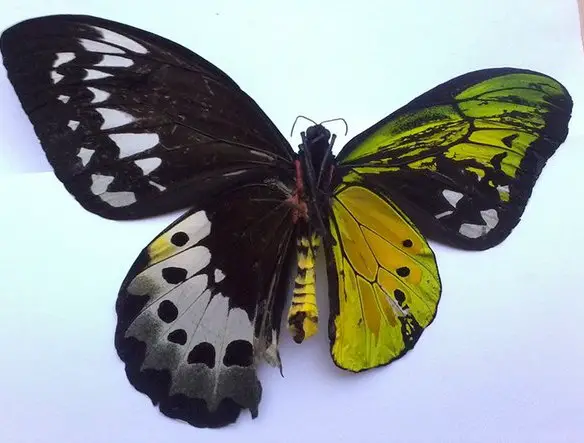Biological diversity encompasses a wide array of organisms, each with unique characteristics that define their existence and survival in the natural world. Among these characteristics, sexual differentiation presents some of the most fascinating variations, particularly in the cases of gynandromorphs and hermaphrodites. These terms might seem complex at first glance, but they represent vital components in understanding the diversity of life.
Gynandromorphs are organisms that possess both male and female physical characteristics, typically observed through a split down the middle of the body, presenting a stark contrast in appearance. Hermaphrodites, on the other hand, are individuals that have both male and female reproductive organs, allowing them to perform both roles in reproduction. While these concepts may sound similar, they delineate distinct biological phenomena with profound implications for our understanding of genetic, developmental, and evolutionary biology.
The phenomenon of gynandromorphism is primarily observed in insects, birds, and crustaceans, revealing a fascinating aspect of nature where animals exhibit a literal blend of male and female characteristics. Hermaphroditism spans across various kingdoms of life, including plants, invertebrates, and even some vertebrates, showcasing nature’s incredible flexibility in reproductive strategies. These conditions not only illuminate the complexities of biology but also challenge our perceptions of gender and sex roles in the natural world.

Basic Definitions
Gynandromorph
The term gynandromorph derives from Greek, where “gyn” means female, “andro” refers to male, and “morph” signifies form or shape. Thus, a gynandromorph is an organism that exhibits both male and female physical characteristics. This rare biological phenomenon is most commonly observed in birds, insects, and crustaceans. Gynandromorphs can be visually striking, presenting a literal half-and-half appearance, where one side of the body reflects male characteristics, and the other side displays female traits.
Hermaphrodite
A hermaphrodite is an organism that possesses both male and female reproductive organs. The concept has a historical context that traces back to ancient mythology, where Hermaphroditus, the child of Hermes and Aphrodite, embodied both genders. In nature, hermaphroditism allows for diverse reproductive strategies, including self-fertilization and mating with any member of the species. This adaptability is found across various life forms, from plants to invertebrates and certain fish species.
Key Differences
Genetic Basis
The genetic underpinnings of gynandromorphs and hermaphrodites reveal chromosomal differences. Gynandromorphs arise from anomalies during cell division, leading to a mix of male and female chromosomes in different cells. Conversely, hermaphrodites typically have a set genetic makeup that supports the development of both reproductive organs from the outset.
Physical Appearance
Visual distinctions between gynandromorphs and hermaphrodites are profound. Gynandromorphs may have a split appearance, with one side of their body showing male traits and the other female. This contrast can include differences in coloration, size, and secondary sexual characteristics. Hermaphrodites, however, do not exhibit such divided physical traits and instead possess a blend of reproductive features that are not always externally visible.
Biological Mechanisms
The developmental processes leading to gynandromorphism or hermaphroditism are distinct. Gynandromorphs result from genetic mishaps during the early stages of development, causing some cells to follow a male developmental pathway and others a female pathway. Hermaphroditism, on the other hand, is often an inherent feature of an organism’s biology, programmed to develop reproductive organs of both sexes as a normal part of its growth.
Occurrence in Nature
The frequency and species variability of these phenomena are quite diverse. Gynandromorphism is rare and mostly noted in species with strong sexual dimorphism, such as certain insects and birds. Hermaphroditism is more common and occurs in a wide range of organisms, including plants, invertebrates, and some vertebrate fish, serving as a versatile reproductive strategy.
Gynandromorphs Explained
Types of Gynandromorphs
There are mainly two types of gynandromorphs: bilateral and mosaic. Bilateral gynandromorphs have a straight divide, with one side showing male characteristics and the other side displaying female traits. Mosaic gynandromorphs contain a mix of male and female cells throughout their body, resulting in a less clear-cut distinction between the two sexes.
Formation Process
The formation of gynandromorphs involves genetic anomalies and environmental factors. These anomalies may occur during cell division in the early embryonic stage, where an error in chromosome segregation or cellular fusion results in parts of the organism developing differently. Environmental factors, such as temperature and chemical exposure, can also influence these developmental anomalies.
Examples in Nature
Gynandromorphs have been observed in various species, including birds, insects, and crustaceans. Notable examples include the gynandromorphic zebra finch, with one half displaying the bright colors and patterns typical of males and the other half showing the more subdued tones of females. In insects, gynandromorphic butterflies have been found with one wing reflecting the vivid colors of males and the other the patterns of females.
Hermaphrodites Explained
Types of Hermaphroditism
Hermaphroditism can be classified as sequential and simultaneous. Sequential hermaphrodites change sex at some point in their life, often in response to environmental cues or population dynamics. Simultaneous hermaphrodites possess both male and female reproductive organs from birth and can perform both roles in reproduction at the same time.
Biological Function
The reproductive strategies and advantages of hermaphroditism are significant. This condition allows organisms to reproduce in environments where finding a mate might be challenging. It also increases genetic diversity through cross-fertilization and enables population stability by ensuring that every individual can contribute to reproduction.
Examples in Nature
Hermaphroditism is widespread in plants, marine animals, and land invertebrates. Many plants are hermaphroditic, with flowers containing both stamens and pistils. Marine animals, like certain species of fish and mollusks, often exhibit hermaphroditism to maximize reproductive success in the vast ocean. Land invertebrates, such as earthworms and snails, use their hermaphroditic nature to reproduce efficiently when isolated from potential mates.

Comparative Analysis
Reproductive Capabilities
The reproductive capabilities of gynandromorphs and hermaphrodites differ significantly, influenced by their unique biological structures. Gynandromorphs, with their split male and female characteristics, often face challenges in reproduction due to the partial development of reproductive organs. Their ability to reproduce depends on which side of their body the functional reproductive tissue is located, and in many cases, they might not be fertile at all.
Hermaphrodites, possessing both male and female reproductive organs, have a broader range of reproductive strategies. They can self-fertilize, which is a significant advantage in environments where finding a mate is difficult. Alternatively, they can choose to mate with other individuals, which promotes genetic diversity and enhances the resilience of the population.
Survival Strategies
Both gynandromorphs and hermaphrodites employ unique survival strategies that benefit their existence within their specific ecological niches. Gynandromorphs, by virtue of their rarity and mixed traits, might evade predators or compete more effectively for resources by combining the strengths of both sexes. For instance, a bird that exhibits both male and female plumage may leverage the camouflage and display traits of each gender, respectively.
Hermaphrodites have the distinct advantage of ensuring reproduction in isolated or mate-scarce conditions. This ability is particularly crucial for survival in fluctuating environmental conditions where the population density is low or for species that are less mobile and have fewer opportunities to encounter mates.
Implications for Research
Genetic and Evolutionary Insights
Research into gynandromorphs and hermaphrodites provides invaluable genetic and evolutionary insights. Studies of gynandromorphs can illuminate the effects of genetic anomalies on development, offering clues about the regulation of gene expression and the flexibility of genetic determinism. Meanwhile, examining hermaphrodites can shed light on the evolutionary advantages of different reproductive strategies, revealing how organisms adapt to their environments to ensure their survival and propagation.
These insights not only deepen our understanding of genetics and evolution but also have practical implications for conservation efforts, agriculture, and medicine, particularly in understanding human developmental and reproductive disorders.
Challenges in Study
The study of gynandromorphs and hermaphrodites is fraught with challenges. Identifying gynandromorphs in the wild can be difficult unless their physical characteristics are markedly distinct. Moreover, the rarity of these occurrences in some species adds another layer of complexity to their study. Hermaphrodites, while more common, present challenges in understanding the full range of their reproductive mechanisms, especially in species where these processes occur internally or are influenced by environmental factors.
These challenges necessitate the development of innovative research methodologies and technologies, from genetic sequencing to ecological modeling, to uncover the mysteries surrounding these fascinating phenomena.
Societal and Cultural Impact
Historical Perspectives
The existence of gynandromorphs and hermaphrodites has influenced historical perspectives and cultural narratives throughout human history. In many ancient cultures, creatures that combined male and female traits were often revered as gods or magical beings, symbolizing balance, fertility, and the unity of opposites. The concept of hermaphroditism, in particular, challenged the binary view of gender and sexuality, a theme explored in mythology, literature, and art across civilizations.
These historical interpretations reflect the human fascination with ambiguity and the natural world’s complexity, highlighting how cultural perceptions of gender and sex have evolved over millennia.
Modern Views
Today, the modern views on gynandromorphs and hermaphrodites are shaped by scientific understanding and social progress. The study of these conditions in the animal kingdom has paralleled increased recognition of the spectrum of human gender and sexual identities, challenging traditional norms and fostering a more inclusive society.
Frequently Asked Questions
What causes gynandromorphism?
Gynandromorphism results from genetic anomalies during the early stages of embryonic development. It may occur due to errors in cell division, leading to some cells having male chromosomes and others having female chromosomes. Environmental factors can also influence the occurrence of this rare condition.
How do hermaphrodites reproduce?
Hermaphrodites possess both male and female reproductive organs, allowing them to either self-fertilize or mate with other individuals. The method of reproduction varies widely among hermaphroditic species, with some preferring cross-fertilization to increase genetic diversity, while others may self-fertilize as a survival strategy when mates are scarce.
Are gynandromorphs capable of reproduction?
Gynandromorphs’ reproductive capabilities depend on the specific distribution and functionality of their male and female tissues. In many cases, the mixed characteristics may impair the ability to reproduce, although there are instances where gynandromorphs have been found to be fertile, especially if the reproductive organs are fully developed on one side of the body.
Do hermaphrodites exist in humans?
True hermaphroditism in humans is extremely rare and involves having both ovarian and testicular tissues. More commonly, individuals may have conditions such as intersex variations, where sexual anatomy does not fit typical definitions of male or female. These conditions are complex and can vary widely in presentation and chromosomal makeup.
Conclusion
The exploration of gynandromorphs and hermaphrodites opens a window into the vast diversity of life, revealing the intricate ways in which organisms can develop, survive, and reproduce. These conditions challenge the binary view of sexual differentiation and underscore the complexity of nature’s design. They remind us that life, in its essence, is a tapestry of endless variation, each thread woven with unique genetic and environmental factors that contribute to the overall picture of biodiversity.
Understanding these phenomena not only enriches our knowledge of biology but also enhances our appreciation for the nuanced mechanisms that underlie the natural world. As we continue to study and learn from these exceptional cases, we pave the way for new discoveries that could unravel further mysteries of life, shedding light on the evolutionary pathways that have led to the incredible diversity we observe today.

